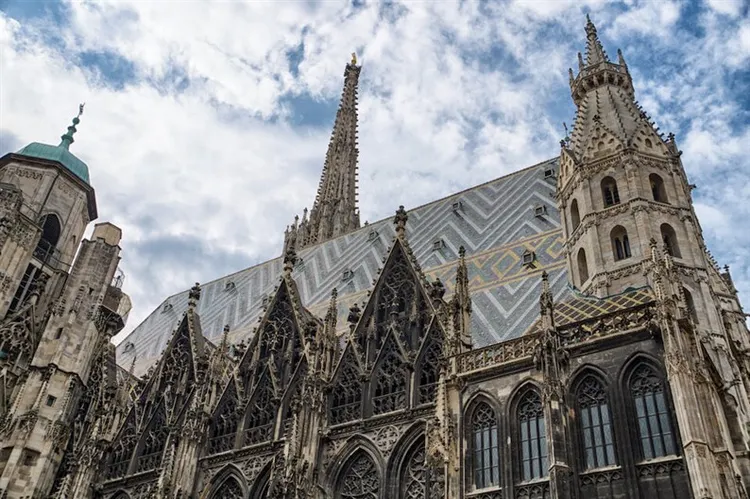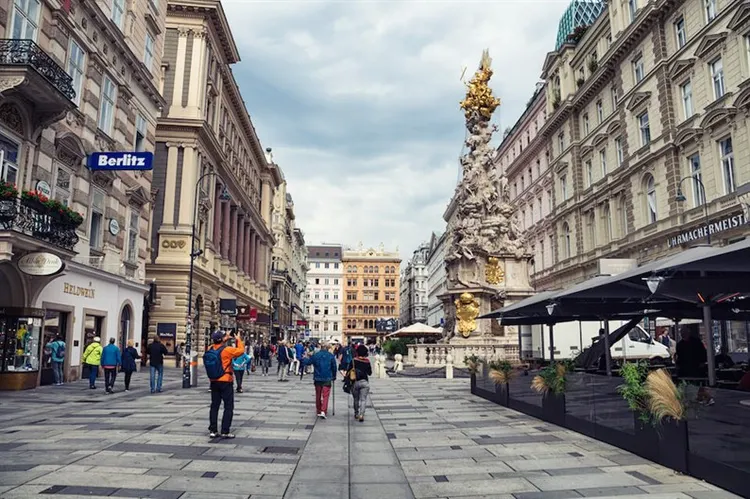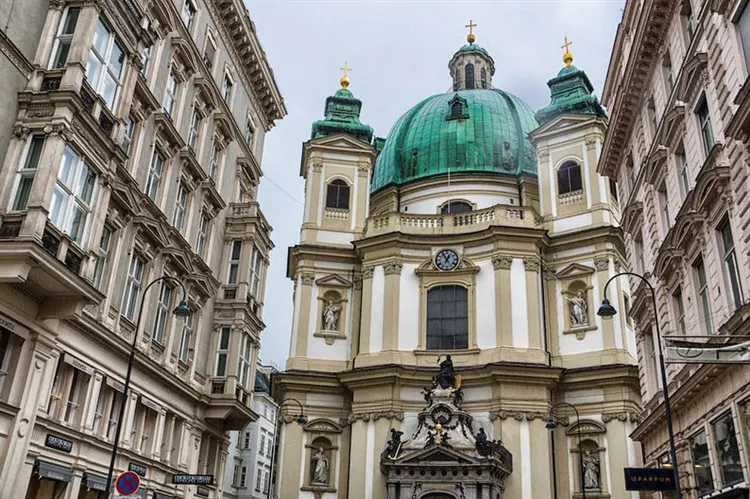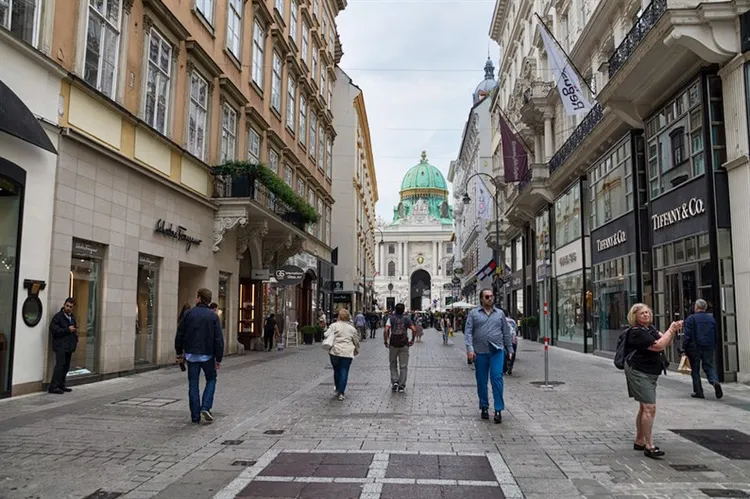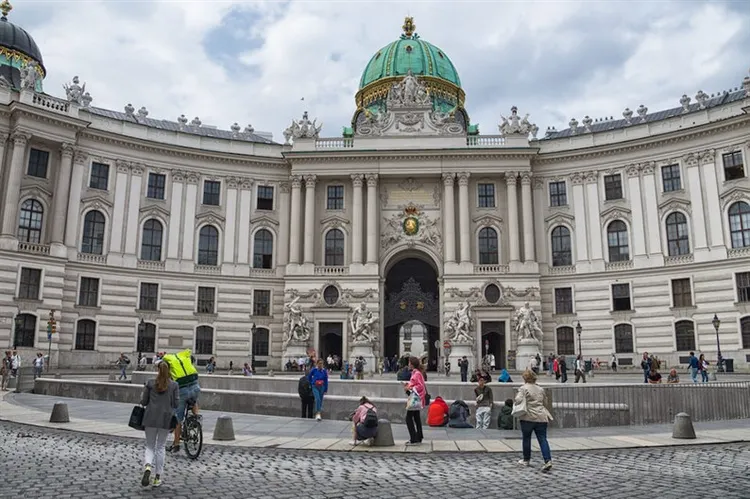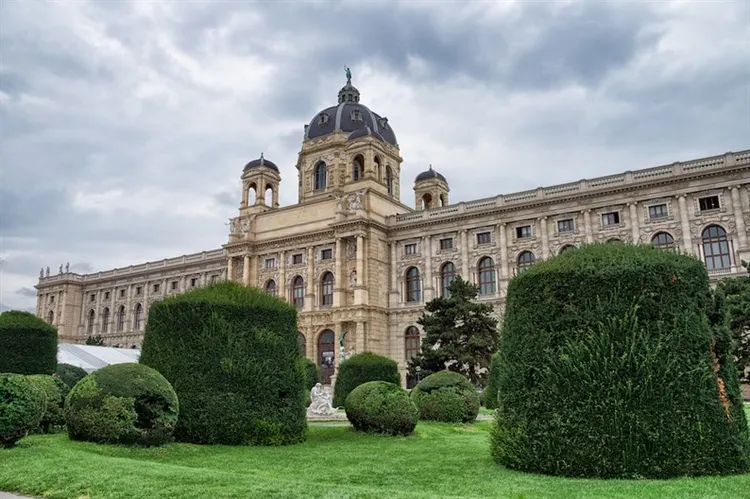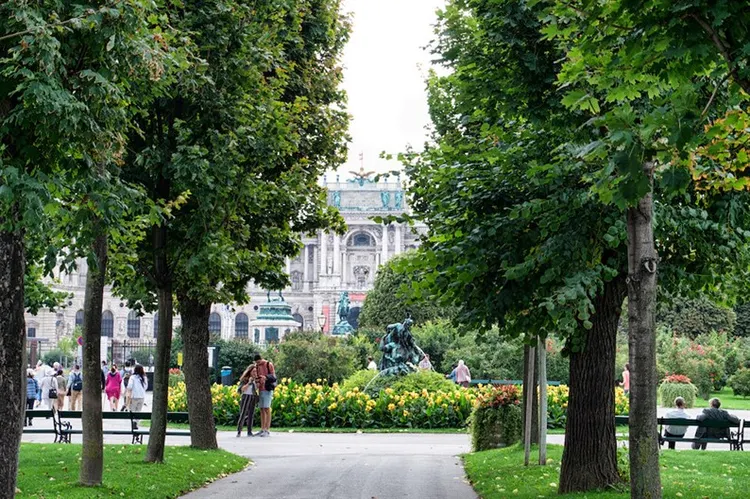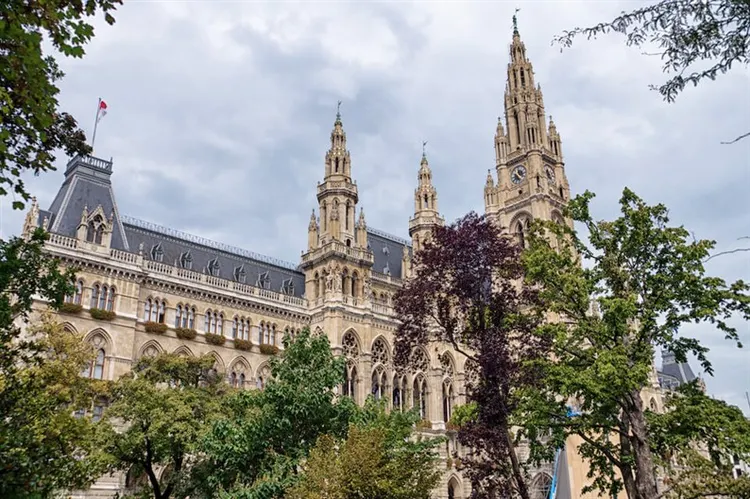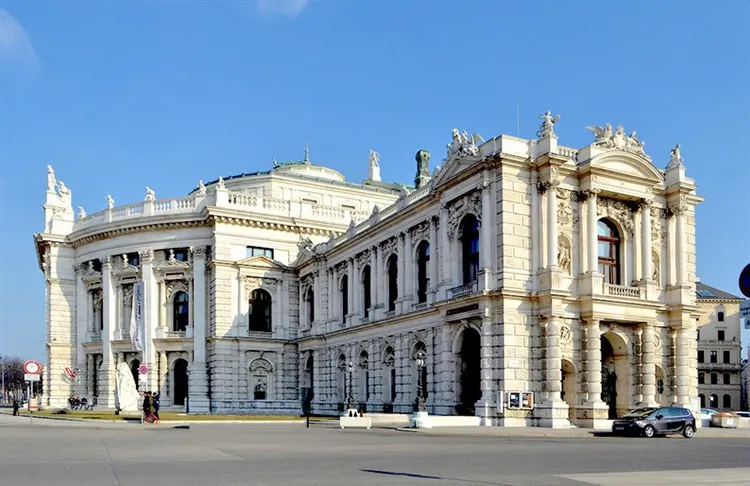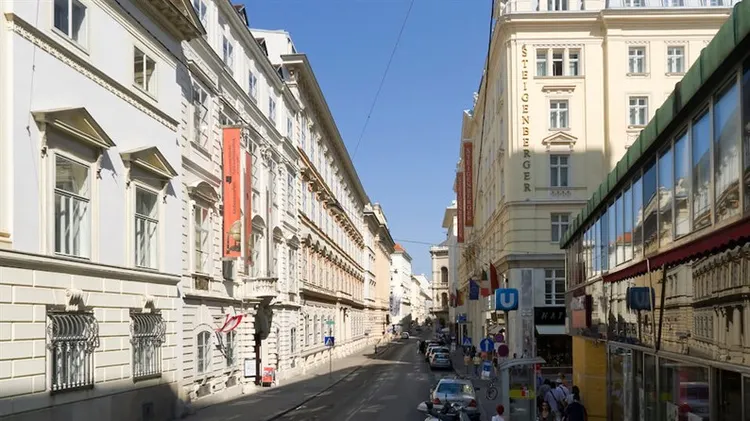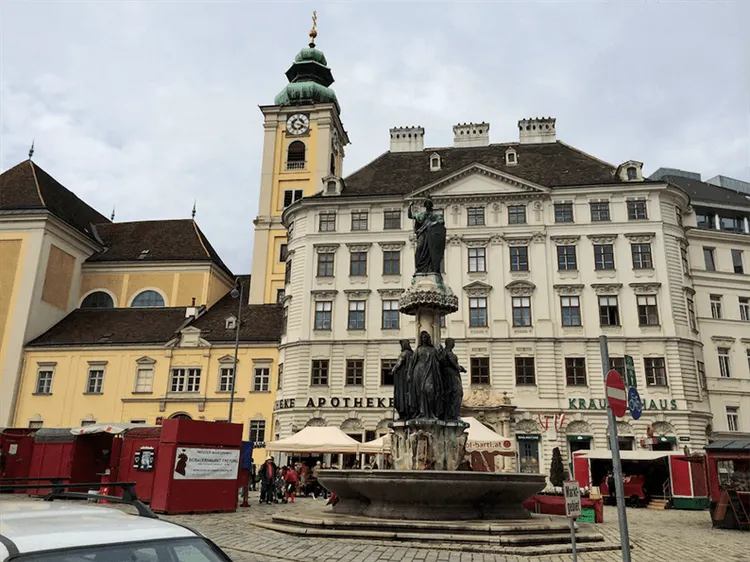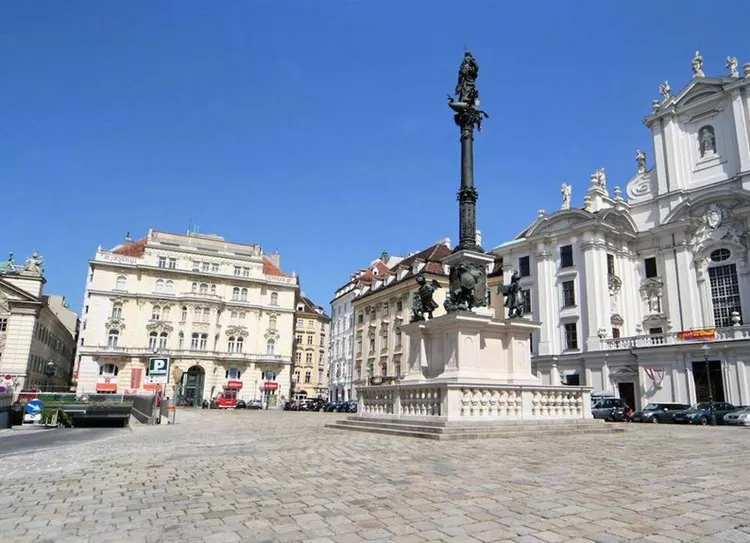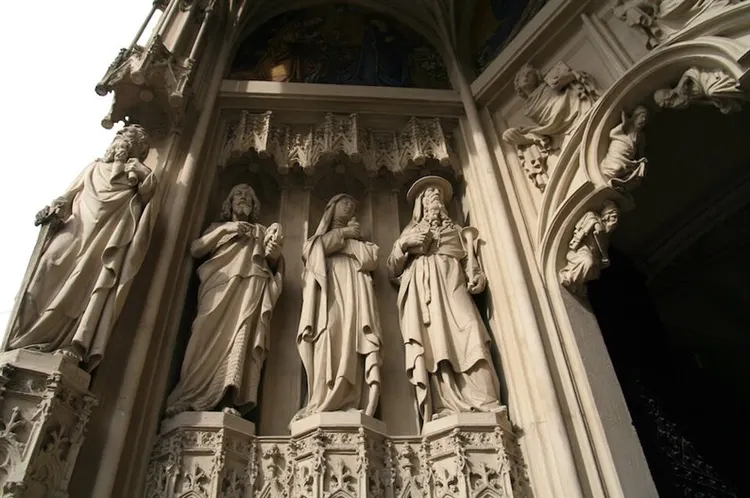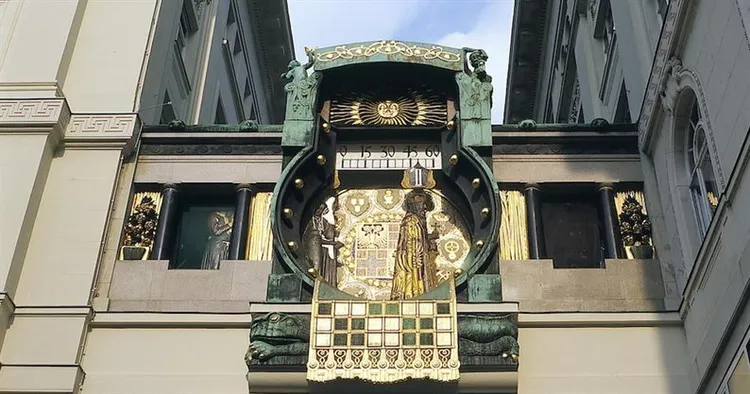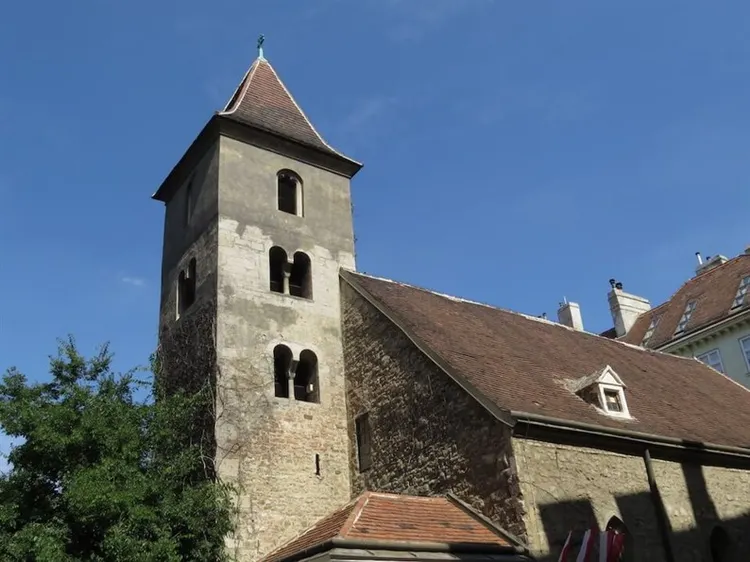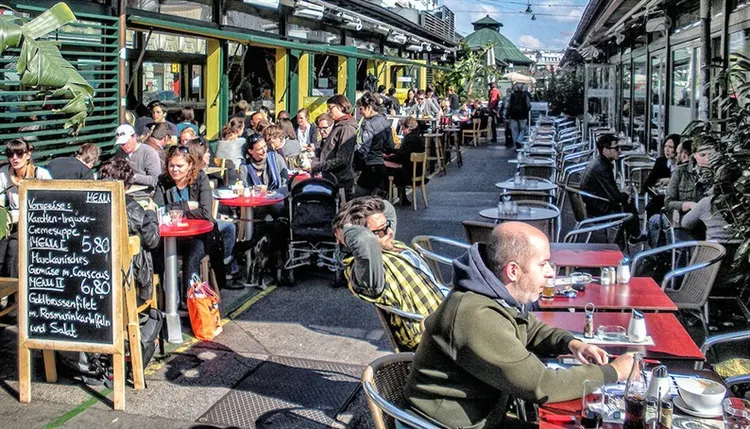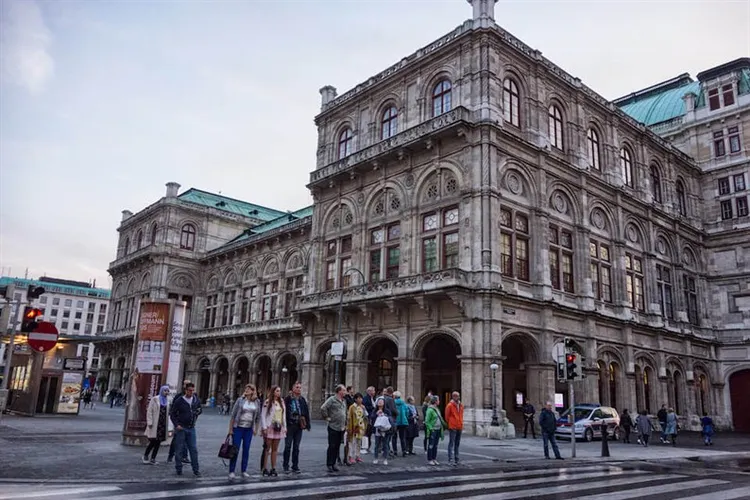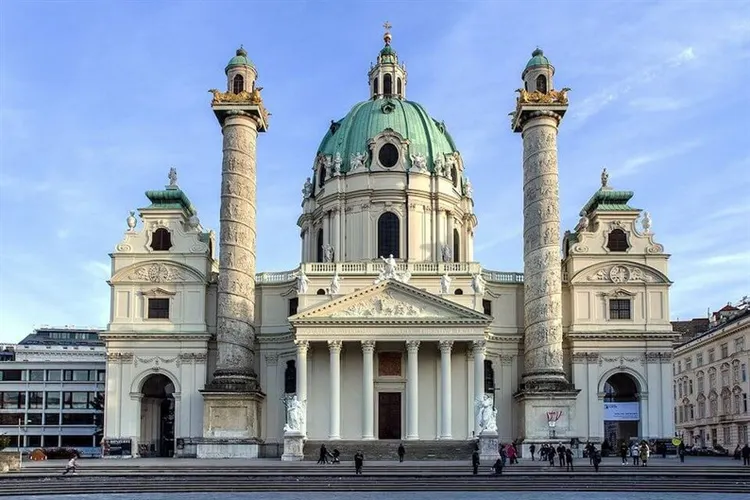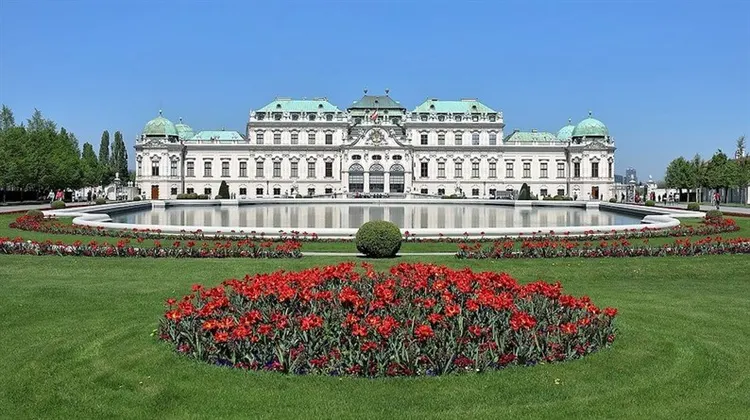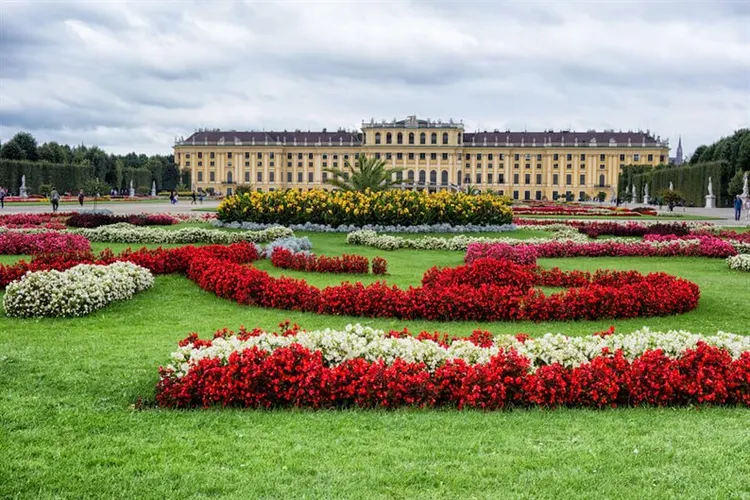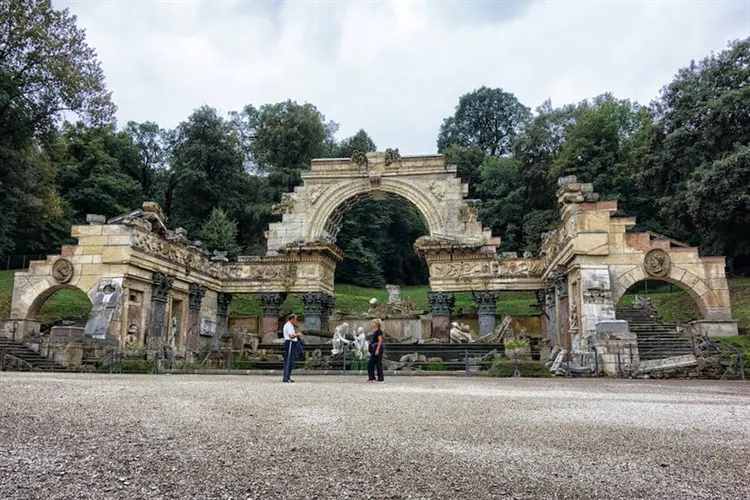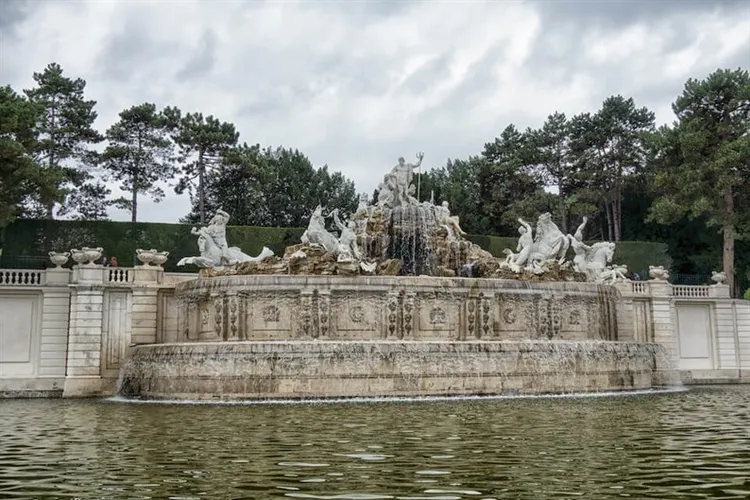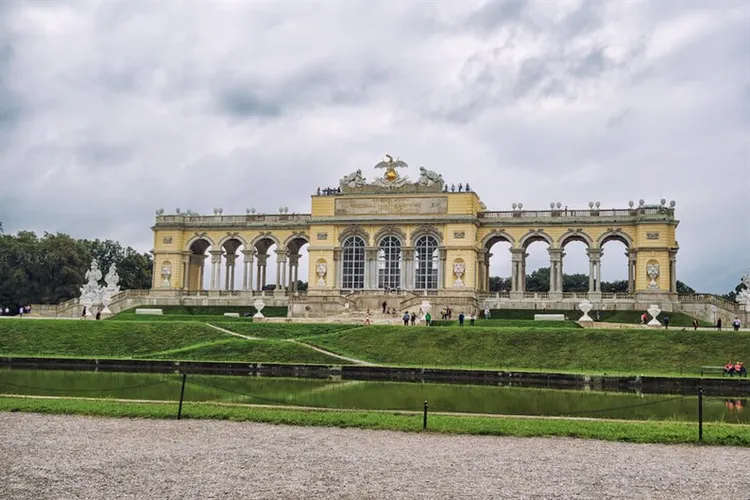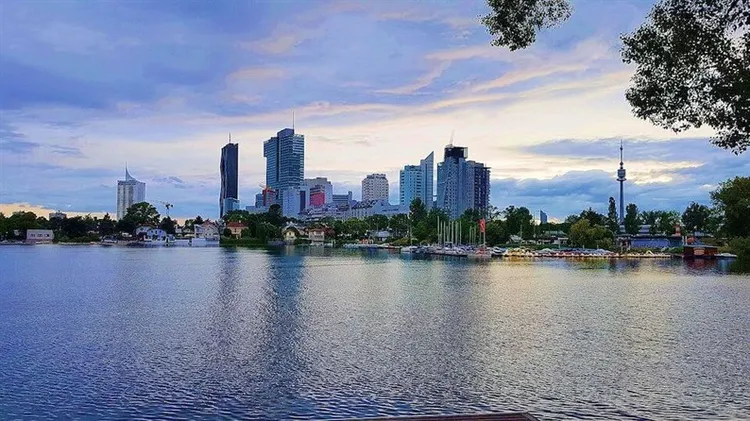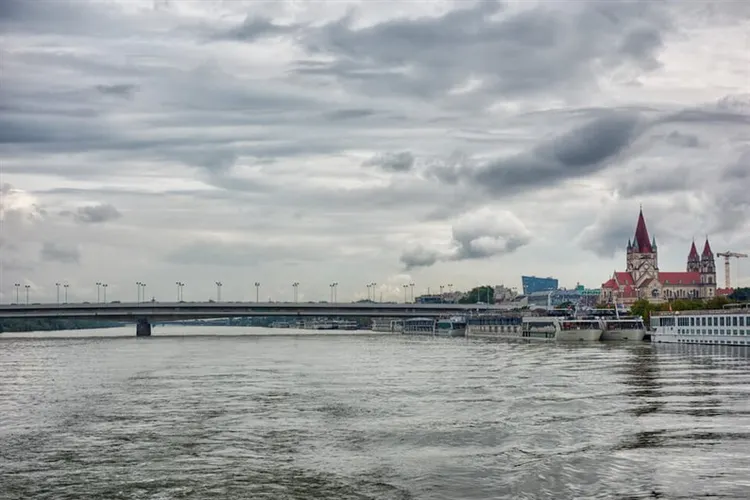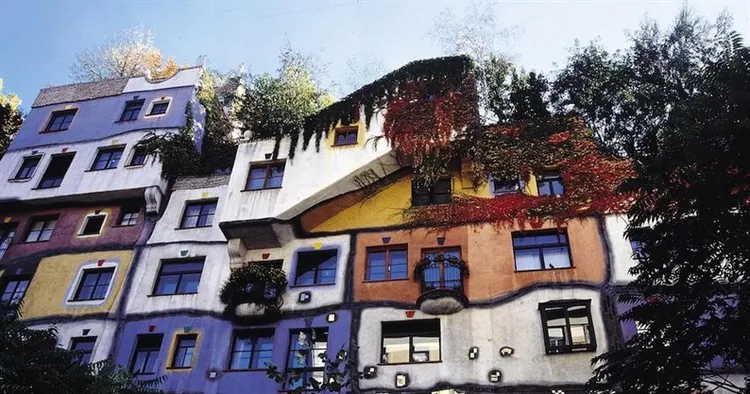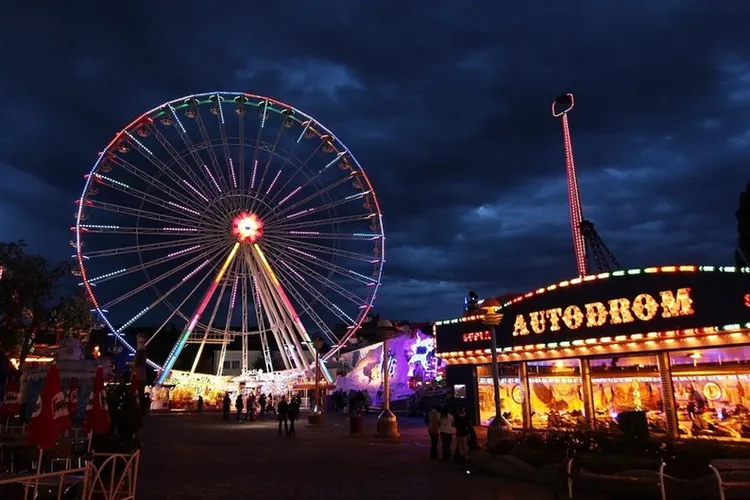What to see in Vienna in 2 days on your own – route, photo, description, map
Splendor carried through the ages. This is the impression that the capital of Austria makes on travelers who have visited the luxurious imperial city for the first time. Here, from the windows of old pastry shops, the intoxicating smell of coffee is heard, and next to the Hofburg, fiacras are waiting for customers in unhurried conversations. The palaces of the Habsburg dynasty, the architectural masterpieces of Gothic and Baroque, the graceful streets where the brilliant Mozart and the beautiful Empress Sisi once walked – this is just a small part of what to see in Vienna in 2 days.
How to get from the airport to the center
Vienna International Air Port Schwechat (Schwechat) is located outside the capital, 18 km southeast of the city.
You can get from the main air gates of Austria to the center by:
The most comfortable way to get to the city is a 24-hour taxi. Getting into the car costs 2.5 €. The road from the airport to Stephansplatz takes 25–40 minutes and will empty your wallet by 40–45 €. The transfer can be ordered in advance. Using the KiwiTaxi international service, you will receive a discount on services and choose a car class.
Book a private transfer from the airport to your hotel for 2 743 RUB
First day
Where better to start your acquaintance with Vienna, if not in its historical center? Walk along the pavement worn by billions of feet, listen to the sounds of the eternal waltz and admire the elegant buildings and majestic palaces. Here, in the heart of the imperial capital, you will travel through time: from the era of Ancient Rome to the era of the reign of the brilliant monarchs of Austria-Hungary.
St. Stephen's Cathedral
The starting point of almost all tourist routes in Vienna is Stephansdom – St. Stephen's Cathedral, affectionately referred to by the Austrians as “Steffl”. The history of the Gothic building, which is 200 meters long and 136 meters high, dates back to 1147. The only decoration of the monumental facade are the figures of saints. The church is crowned with a roof covered with 230,000 glazed tiles. The bright mosaic of the roof stands out in contrast against the background of the walls lined with rough hewn stone.
Do not limit your acquaintance with the temple only with an external inspection. Enter the Giant Gate and admire the stained-glass windows, high vaulted ceilings, a 15th-century carved pulpit, the miraculous icon of Our Lady of Pöcs and 18 altars. In one of the chapels there is a shrine with the relics of St. Valentine is the patron saint of lovers. If you are lucky, you will hear the solemn sounds of the organ, which in 1960 replaced the 1334 instrument that died during the Second World War.
The cathedral has two viewing platforms. The platform of the South Tower can be reached by stairs, overcoming 343 steps. We advise you to visit the North Tower – an elevator delivers tourists to its top.
Tourist Card: discounts and free transport – 17 €
Hop-on hop-off bus for 1 day and free Wi-Fi – 30 €
Ticket for the Mozart and Strauss concert at the Viennese Kursalon – 59 €
Morning training at the Spanish Riding School – 15 €
Graben Street
The central object and main attraction of the Graben is the plague column. The marble Baroque monument appeared in Vienna in 1693, when the city was recovering from a plague that claimed 76,000 lives. Glorifying the Holy Trinity, the architect symbolically divided the pillar, consisting of sculptural images of human bodies, angels and clouds, into 3 parts. The composition is crowned by a gilded cross.
St. Peter's Church
Walking along the Graben, do not miss the baroque church of St. Peter. According to the city archives, even in the times of Ancient Rome, there was a Christian temple here. In 792, Emperor Charlemagne ordered the construction of a new holy house in its place, the original appearance of which has not been preserved. The church, which has survived to this day, appeared in the center of Vienna in 1733.
The facade of the building crowned with a green 56-meter dome is compressed from two sides by inclined symmetrical columns. The interior decoration amazes even those who are familiar with the luxurious interiors of Roman temples. The views of parishioners are attracted by gilded stucco, sculptural compositions and marvelous paintings. Thanks to the masterpiece of organ craftsman Franz Josef Svoboda, who created a magnificent instrument in 1904, organ music concerts are held daily in the church.
Kohlmarkt street
The elite Graben rests on the even more pompous Kohlmarkt. In the 16th century, there was an active coal trade here (Kohlmarkt is translated as “coal area“). After the construction of the Hofburg royal residence, this place was chosen by wealthy merchants and manufacturers of exclusive goods. And today the buildings of the glamorous street adorn the windows of designer stores, including Bulgari, Cartier, Armani, Chanel, Gucci, Louis Vuitton.
At the end of the Kohlmarkt, on the right side of the street, the Demel confectionery, the former official supplier of desserts to the imperial court, has been selling breathtaking sweets for more than 200 years. The menu of this temple of cakes includes candied violets, apple strudel, tinned gingerbread, the famous Sacher cake and a rich selection of coffee. To try local delicacies, you will have to stand in a long queue.
Hofburg
The short Kohlmarkt will take you to the winter residence of the Habsburg dynasty, or rather, to the Empire semicircular facade of the Wing of the Archangel Michael. In this building, which opens a series of 19 palaces, 18 buildings and 2 parks representing different eras and architectural styles, priceless artifacts of the Sisi Museum, the Silver Chamber and the Imperial Apartments are displayed today.
Emerald domes crowned with crowns remind contemporaries of the former greatness of the powerful Austrian monarchy, whose members owned the Hofburg for 600 years. The area of the palace complex is 250,000 m2. Its treasures are so numerous that it will take you at least a week to explore them. Therefore, we suggest limiting your acquaintance with the Hofburg to a walk through the magnificent territory. Start it from Michaelerplatz, where fiacres line up.
Pass through the arched gate into the inner courtyard of In der Burg, one of the buildings of which today houses the residence of the Austrian President. Continuing on your way, you will see the Swiss Court, the royal stables, the National Library, Amalia Castle, look into the court churches, visit the Butterfly House and visit the Heldenplatz (Heroes' Square).
Imperial treasury in the Hofburg Palace – 12 €
Museum of Art History
Across the road from Heldenplatz is Maria-Theresien-Platz, where the monument to Empress Maria Theresa is framed on both sides by 2 symmetrical Renaissance buildings: the Natural History Museum and the Kunsthistorisches Museum. The latter appeared in the capital in 1891. In its spacious halls, unique exhibits of the Kunstkamera, collections of coins, orders, musical instruments, military armor, hunting trophies, ancient monuments of Greek and Roman art and relics of Ancient Egypt and the East are exhibited.
Most of all, visitors are attracted by the art gallery – the fourth on the planet in terms of the number of paintings. Here are well-known paintings by masters of Western Europe of the XIV-XVIII centuries. The core of the collection is masterpieces by Veronese, Titian, Anthony van Dyck, Albrecht Dürer, Raphael Santi, Velázquez and Pieter Brueghel the Elder.
Day ticket to the Museum of Art History – 15 €
Volksgarten park
A beautiful park adjoins the Heldenplatz square, taking its guests into the world of blooming roses and irises, painting the alleys in red, orange and yellow tones. A corner of nature appeared in the center of Vienna in 1820. It was laid out on the site of earthen ramparts and fortifications, which turned into ruins after the invasion of Napoleon's army.
Initially, a small green oasis was intended for the rest of the townspeople close to the royal family. Only 3 years after the opening, the landscape park became available to the public (the word Volksgarten is translated as “People's Garden”). And today, anyone can walk among evenly trimmed lawns, enjoy the scent of flowers, feed fat ducks and take pictures at local attractions: the monument to Empress Sisi (Elizabeth of Bavaria), Theseus Temple and the Triton and Nymph Fountain.
town hall
In 1868, a competition was announced in Vienna for the best project for a new City Hall. The main prize went to the Austrian architect Friedrich von Schmidt. Construction began 5 years later and was completed in 1883. The appearance of the building is inspired by the traditions of the Gothic town halls of Flemish, and the seven courtyards give the building the features of baroque castles.
The brick facade is covered with natural stone: slate, limestone and marble. A 98-meter tower rises above the central part. A 3.4-meter figure of the guardian, clad in copper armor, is hoisted to its top. Inside the building – 1,575 rooms. The central element is a two-story front hall, the solemn atmosphere of which is created by gilded walls, columns and a three-ton chandelier.
Part of the rooms of the Town Hall are occupied by the offices of the city administration. In addition, about 800 social events are held here every year – from party balls to music festivals.
Burg Theater
Opposite the Town Hall you will find another architectural monument – the building of the former court theater of the Habsburgs, founded in 1741 by the will of Empress Maria Theresa. The troupe, which quickly gained success, had its own premises only in 1888. The snow-white Baroque building with a semicircular facade has taken its rightful place among the elegant buildings of the Ringstraße.
Gottfried Semper was the architect of the Burgtheater. The ingenious German architect gave his new creation the features of another masterpiece – the State Opera in Dresden. The facade of the Vienna Temple of the Arts is decorated with a balustrade, a relief attic, statues of ancient gods and muses.
The interiors are decorated in the French Baroque style, which can be seen in the rich wall paintings, the abundance of marble, gilding, stucco and velvet. The revolving stage hosts 800–900 performances each year with around 100 actors.
Herrengasse street
Herrengasse (German: Herrengasse – “Masters' Lane”) is steeped in history. The Limes, the frontier of the Roman Empire, passed through this place. In the Middle Ages, the street was called Hochstrasse and was renamed only in the 16th century, when representatives of the city nobility moved into luxurious buildings. Every second building here is an architectural monument. For example, at Herrengasse, 9 is the Mollard-Clary Palace – the residence of Emperor Joseph II.
House number 11 houses the sweet attraction of the capital of Austria – the Central Cafe, which since 1876 has been offering its guests baked goods prepared according to its own recipes and aromatic coffee. At one time, Sigmund Freud, Lenin, Hitler and Stalin sat at round tables surrounded by marble Venetian columns. Whenever you arrive in Vienna, at the entrance to the confectionery you will be greeted by a line of people who want to get a vivid aesthetic and taste experience.
Freyung Square
Another place rich in architectural masterpieces is located 200 meters from the Central Cafe. The history of the square goes back to the 12th century, when the Scots missionaries built the Schottenkloster monastery in Vienna, which has survived to this day. In addition to the cloister, Freyung is dominated by the Baroque Harrach Palace, built in 1690 for Count Harrach, the Porchia Palace, created in 1546 in the Renaissance style, and the Kinsky Palace, the facade of which has been completely preserved in its original form since 1716.
Triangular Square is best known for its holiday fairs. In December, the wooden houses of Vienna's oldest Christmas market line up here. Since 1772, artisans have been offering their exclusive products near the walls of the Scottish monastery. On the shelves are Christmas decorations, elegant glass decorations, wooden, ceramic and handmade textile products. During Easter, a colossal tower of 40,000 painted eggs is erected on Freyung.
Am Hof Square
On the territory where the modern Am Hof square is located, in the middle of the 1st century, an outpost of Vindobona appeared – a military camp of the Roman Original Region. In the 5th century, the Romans left the settlement destroyed by fire. Only after 7 centuries life was revived here again. In the 12th century, members of the Babenberg princely dynasty built a residence, in the central courtyard of which a market was located. Lively trade was not hindered by the chopping block erected in the neighborhood – public executions were carried out nearby.
In 1645, a formidable army of the Swedes rushed to Vienna. Kaiser Ferdinand III swore to erect a parade pillar in honor of the Virgin Mary if the city was saved. A year later, when the troops of the commander Torstensson, without making a single attempt to invade, left the vicinity of the Austrian capital, the Marienzeule column dedicated to the Virgin was erected in the center of the square.
Among other buildings of Am Hof, the attention of tourists is attracted by the baroque building of the former weapons arsenal (Zeighaus) and the Church of the Nine Angelic Choirs.
Maria am Gestade church
Among the multi-membered Gothic buildings in Vienna, the building of the Maria am Gestade church is considered one of the oldest. The first mention of a wooden Romanesque chapel dates back to 1158. Here, on the bank of one of the Danube branches, later turned into a canal and moved 300 meters to the east, fishermen and sailors prayed. The modern temple was built in 1394-1414.
In his lifetime, he saw the invasion of the Turks in 1683, and the military warehouses and stables of Napoleon's army. In 1812 the church was repaired and re-consecrated. The only decoration of strict stone walls is a 56-meter openwork bell tower crowned with a golden cross. In the decoration of the interior you will find elements of the Neo-Gothic style: stained glass acute-angled windows, sandstone sculptures, lancet vaults and an endless dome.
High Market Square
The forum of the ancient Roman Vindobon, which unfolded in the 1st century on the site of the modern Hoher Markt (High Market) square, is reminiscent of the ruins of the dwellings of military leaders. The dilapidated remains of ancient structures, located at a depth of 5 m, can be seen at house number 3. In the middle of Hoer Markt, there is a Baroque Wedding Fountain, depicting the wedding of the Virgin Mary and Joseph in white marble.
Crowds of travelers gather at the High Market every day at 12:00. The guests of the city are united by the desire to see the performance, which is shown by the famous “dancing” Anchor Clock (Ankeruhr), installed on the gallery connecting the two buildings. Within 15 minutes, the history of Austria appears before the audience. Under the musical accompaniment, 12 figures march on the dial, depicting the most significant figures of the country.
Church of St. Ruprecht
The exact time of the construction of the oldest temple in Vienna is unknown. Archaeologists believe that the church, dedicated to the Christian patron saint of salt merchants – St. Ruprecht of Salzburg, appeared in 740. As a place of religious ceremonies, the building was first mentioned in the annals of 1200. In the Middle Ages, the Salt Administration was located in its premises, and in 1276 the ancient walls were engulfed in a strong fire.
Over the centuries, the Romanesque church, outwardly resembling a knight's castle, has undergone several changes. In its original form, only the lower parts of the tower have been preserved, the construction of which dates back to the 15th century. To this day, the church houses the oldest bells in the city dating back to 1280, and the interior is decorated with an ebony statue of the Virgin Mary and stained-glass windows depicting the Crucifixion and the Virgin and Child.
Market Naschmarkt
At the Karlsplatz metro station, the shopping arcades of the Naschmarkt open market, leading its history from the 18th century, stretched. Residents of Vienna come here for shopping and hungry tourists hurry. Loud cries of touts sound here, live music plays, sellers praise their delicious goods and willingly let you taste the products you like. In this gourmet paradise you will find fruits and vegetables, cheeses and sausages, seafood and expensive fish varieties.
Numerous restaurants and cafes are open on the territory of the bazaar, offering delicious dishes from all cuisines of the world at low prices. On Saturdays, the Naschmarkt turns into a giant flea market. If you try, then among the presented belongings you can find real treasures: handmade antique gizmos, lovely ceramics, antique watches and vintage jewelry. Trading is welcome!
Vienna State Opera
The capital of Austria cannot be imagined without music. Mozart, Brahms, Gluck, Beethoven, father and sons Strauss created their immortal works here. And it is not surprising that the State Opera of Vienna, known far beyond the borders of Austria, is one of the three best opera houses on the planet. Musical and dramatic art was popular in the imperial city as early as the beginning of the 18th century, but the Court Opera House did not have its own building.
The construction of the Temple of Melpomene dates back to 1869. August Sicard von Sicardsburg and Eduard van der Nüll created the imposing Neo-Renaissance building. The chosen architectural solution met with a flurry of ridicule and caustic statements from both the townspeople and critics. After the premiere (and it was Mozart's Don Giovanni), one of the architects killed himself, and the life of the second was taken by a heart attack.
Years later, the world recognized the building as an architectural masterpiece, the facades of which are no less magnificent than the luxurious interiors. The annual repertoire of the theater consists of 60 productions – popular works and world premieres.
Karlskirche
In 1679, the capital of Austria was plunged into darkness, created by a relentless plague. Charles VI, who was ruling at that time, made a vow before God and people: if the deadly disease recedes, he will give the city a new church dedicated to St. Carlo Borromeo. The monarch kept his word. In 1716, when the epidemic receded, and Vienna began to gradually return to life, the construction of the Karlskirche church began.
After 21 years, a cathedral opened its doors for the first time in the southern part of Karlsplatz, the architecture of which combined elements of different eras and styles. The relief portico reminds of the ancient buildings of Ancient Greece, and two symmetrical pillars similar to minarets are modeled on the Roman columns of Trajan. The 25-meter dome crowning the building is a brilliant representative of the Baroque. The interior is decorated in bright colors. Colorful frescoes and sculptural compositions glorify Saint Charles.
Concert “The Four Seasons” by Vivaldi in Karlskirche – 28 €
Mozart's concert “Requiem” in Karlskirche – 32 €
Gazebo
The palace ensemble, which includes two magnificent baroque buildings, was built in 1722. The great architect Johann Lucas von Hildebrandt created a real masterpiece worthy of its owner, Prince and commander Eugene of Savoy. Previously, the architect worked on the construction of cathedrals, so his new creation received a facade distinguished by smooth lines and intricate decor that attracts attention with an original pattern.
A visit to the Belvedere halls is a must have for art lovers. The Upper Palace presents works by Austrian and French authors. The highlight of the exposition is the paintings by Gustav Klimt, including his masterpiece of modernism The Kiss. Works by contemporary artists are exhibited in the Lower Palace. If you are indifferent to painting, take a walk through the wonderful park, enjoying the beauty of colorful flower beds, grottoes, cascades, fountains and marble sculptures.
Entrance tickets to the Belvedere – 14 €
Second day
After a rich acquaintance with Vienna, the second day of the trip will please you with an easy walk through the most beautiful palace of the Austrian capital and the park adjacent to it. Then we invite you to admire the full-flowing Danube and the extraordinary Hundertwasser House, and spend the evening in the Prater – a green recreation and entertainment area.
Schönbrunn Palace
In 1619, Kaiser Matthias, while hunting in the vicinity of Vienna, discovered the spring. It was so beautiful that the monarch called it the “Beautiful Fountain” (Schönbrunn). This name was also given to the summer castle, which appeared in the Katterburg manor in 1638. The baroque palace acquired its modern look in the 18th century under the great empress Maria Theresa.
The palace has 1,441 rooms. Luxurious walls, decorated with frescoes, gilding and expensive fabrics, have seen in their lifetime Napoleon, and six-year-old Mozart, who made his debut in one of the state rooms, and the powerful Emperor Franz Joseph I, and his wife, the beautiful Sisi, still adored by the Austrians.
To get acquainted with the interiors, you must purchase a ticket. To avoid quite impressive queues at the ticket office, it is better to do it in advance, on the official website of the palace. After seeing the magnificent interior, do not rush to leave Schonbrunn. No less beautiful and rich in attractions is a huge well-groomed park, the territory of which could accommodate 220 football fields.
Strudel show with tasting at Schönbrunn Palace – €11.90
Roman ruins
Walking through the park, do not miss the monument symbolizing the power of the Habsburgs, the dynasty whose representatives occupied the throne of the Holy Roman Empire of the German nation in 1438-1806. The Roman ruins that adorn the foot of the Schönbrunn hill are an architectural ensemble created by analogy with the ruins of the ancient temples of Titus and Vespasian.
The center of the composition is a rectangular pool. From the side of the hill, it is framed by a powerful arch made of wedge-shaped blocks, raised on the remains of Ionic columns. The illusion of dilapidated antiquity and a random pile of stones is created by the side parts with bas-reliefs and niches. In the center are sculptures of the river gods Enns and the Danube. Above, on a steep slope, the figure of Hercules fighting evil is barely visible.
Fountain Neptune
Another tribute to ancient Roman architecture – the Neptune Fountain – closes the Great Parterre of the palace park. The erection of the sculptural group, symbolizing the greatness of the Habsburgs, dates back to 1780. Johann Ferdinand Hetzendorf acted as an architect, Wilhelm Beyer worked on the creation of marble figures.
In a huge pool, on a stone pedestal decorated with ornaments and bas-reliefs, there is an artificial rock grotto. At its top, next to the carriage-shell, the mighty Neptune rises. To the left of the patron of the water element, folded her hands in a pleading gesture, the nymph Tethys bowed her head. To the right of the lord sits another mythological daughter of nature, holding a cornucopia in her hand. Tritons frolic nearby, taming sea horses.
Glorietta
The most beautiful view of the palace and the red roofs of the old city opens from the picturesque Schönbrunn hill. However, this is not the only reason why tourists climb to a height of 25 m. Here, on the coast of a small carp pond, Glorietta rises.
Its appearance in 1775 marked the victory of the Austrians over the Prussian army in the Seven Years' War. The solemnity of the white-and-yellow structure is given by covered colonnades, statues of warriors dressed in armor and the figure of an eagle sitting on the globe, crowning the building, holding a golden crown in its beak.
One of the best cafes in Austria is open in the central part of the pavilion. Here you can take a break from the tiring climb, listen to the immortal Strauss waltzes and taste the Viennese apple strudel. After enjoying an excellent dessert, find strength in yourself and climb the spiral staircase to the observation deck located on the roof of the Glorietta.
Schönbrunn Zoo
In Schönbrunn there was a place not only for architectural monuments. Since 1752, the oldest zoo in the world has been operating here. Vienna owes the appearance of a wildlife corner near the palace to Emperor Franz I Stephen, known for his love of natural sciences. Initially, the green oasis was intended to be visited only by the urban elite. Since 1779, everyone could admire representatives of the world of fauna. There was no entry fee.
Today, the Schonbrunn Zoo, which covers an area of 17 hectares, proudly presents 8,500 animals. Four-legged and winged inhabitants feel at ease in spacious multi-level enclosures. There are almost no dreary protective cells on the territory – ditches, natural fences and thick glass are used instead. Be sure to visit the panda pavilion, the home of the arctic bears and the home of the big cats.
Tickets to Schönbrunn Zoo – 20 €
Old Danube
The second longest European river, the Danube, flows through the Austrian capital. The best place to explore the waterway is Alte Donau (Old Danube) surrounded by gardens and meadows. Those who want to meet non-tourist Vienna come here. Here you can stroll along the picturesque alleys, take a break on the terrace of one of the cafes, admire the expanse of water and snow-white swans gliding along it.
We recommend visiting the Old Danube to those who come to the city during the warm season. Sports fans will appreciate the presence of playgrounds and surf schools, as well as the opportunity to rent a catamaran or an electric motor boat. And lovers of swimming and sunbathing will be pleasantly surprised by 4 outdoor pools and a 2-kilometer beach.
A closer acquaintance with the river and the Danube Canal can be reduced by taking part in a 1.5-hour boat trip. The closest marina to the Alte Donau is next to the Reichsbrücke bridge.
Boat trip
It is worth including the “water” part in the route for those who want to relax in the company of pleasant music, drinks and tasty dishes of Austrian cuisine, as well as to see the green banks of the Danube and modern Vienna. Pleasure boats depart from the pier at the Reichsbrücke bridge, the journey ends on the embankment next to Schwedenplatz (or vice versa). The schedule and ticket prices can be found on the official website of the flotilla.
From the deck of a cozy motor ship, you will have views of the beauties of nature and architectural sights. There are 2 tour options. On route A, you will enjoy the Prater's forested landscapes, as well as the famous Ferris wheel, the Urania Observatory, the House of Arts and the Church of St. Francis of Assisi. Cruise B participants will get to know the modern part of the city of Donau City, the Rossauer barracks, the Millennium Tower and the 252-meter Danube Tower.
Sightseeing boat tour with lunch – 33 €
Danube Canal Cruise – 1 hour – 23 €
Hundertwasser House
“Viennese Gaudi” is called the eccentric Friedensreich Hundertwasser, who has his own idea of u200bu200bideal architecture. Free from all conventions, the eccentric artist abandoned straight lines, even roofs and geometrically correct forms. Some call him a genius, others contemptuously call him the creator of kitsch. But no one has yet been able to indifferently pass by cult creations, the first of which was the famous building on Kegelgasse 36-38.
The whimsical Hundertwasser House appears before the audience as a kaleidoscope of bright colors and asymmetrical lines. On its facade there was no place for sharp corners and identical details. The original master decorated his brainchild with glazed tiles, flights of stairs in the form of forest paths, lush greenery, windows of various shapes and sizes. The building is residential – 4 offices and 52 apartments are hidden inside.
Attention fans of non-standard architecture! 500 meters from the Hundertwasser House, on Untere Weißgerberstraße 13, perched the Vienna House of Arts – another masterpiece of an extravagant architect.
Prater park
The former hunting grounds of the emperors, now a green area and a popular amusement park – all this is the Vienna Prater. The main alley, 4 km long, is framed by centuries-old chestnut trees, bicycle paths are laid nearby and golf courses, boat stations and horse riding grounds are equipped. Here you can visit the planetarium, ride the rides, look at the wax celebrities of Madame Tussauds and taste traditional Austrian dishes in national cuisine restaurants.
The main attraction of the Prater is the Ferris wheel, which makes a complete revolution in 20 minutes. The attraction appeared in the park in 1897. At that time it was considered the largest and most famous in the world. But even now the Vienna Riesenrad (Wiener Riesenrad) does not give up its positions. Closed retro wagons take visitors to a height of 65 m, from where, in good weather, you can see the old town and the hills of the Vienna Woods in detail. Ticket price – 10 € (adult) and 4.50 € (children).
Skip-the-line Giant Ferris Wheel ride – €12
The key to a good trip will be the right hotel. If you are going to Vienna for only 2 days, forget about cheap hotels located on the outskirts of the city, because in this case you will have to spend precious time on the road. The opinion that housing in the center of the capital has a high cost is wrong. On the small side streets you will find many small three-star hotels that will pleasantly surprise you with moderate prices and comfortable rooms.
You can eat tasty and cheap in Vienna at Bitzinger, a chain of eateries offering excellent sausages and fried sausages. Juicy schnitzel and the best baked ribs in the city will be served to you at the Ribs of Vienna restaurant, whose entire staff speaks Russian. A cozy restaurant located on Weihburggasse 22 is very popular with both tourists and guests of the capital, so it is better to book a table in advance.
If you get tired while walking through the historic center, take the Vienna Tram Ring sightseeing tram (No. 1 or 2). The trip will not only allow you to take a break, but also give you the opportunity to see the main sights of Vienna from the window.
